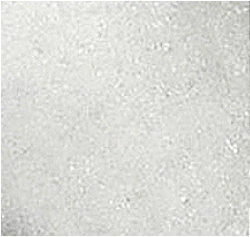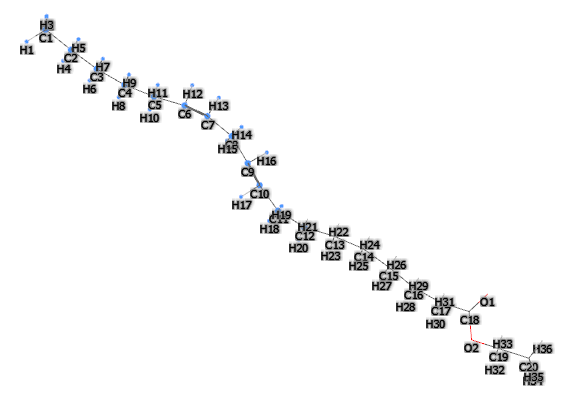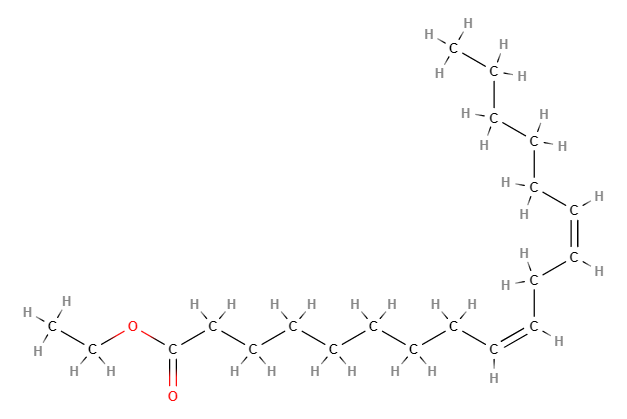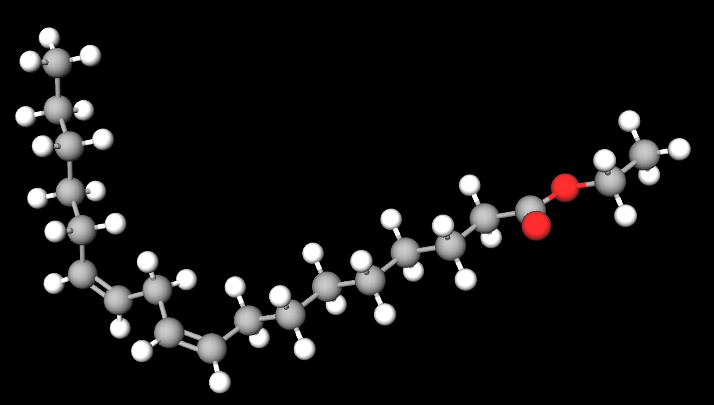Check the ingredients!
... live healthy!


| "Descrizione" by A_Partyns (12876 pt) | 2023-Oct-26 11:31 |
| Evaluation | N. Experts | Evaluation | N. Experts |
|---|---|---|---|
| 1 | 6 | ||
| 2 | 7 | ||
| 3 | 8 | ||
| 4 | 9 | ||
| 5 | 10 |
Ethyl linoleate is an unsaturated essential fatty acid, ethyl ester of linoleic acid formed by the condensation of ethanol with linoleic acid, obtained by esterification of linoleic acid with ethanol by catalysing sulphuric acid.
The name describes the structure of the molecule:
Raw Materials Used in Production:
Ethyl Linoleate is produced via the esterification of linoleic acid, a common polyunsaturated fatty acid, with ethanol.
Step-by-step Summary of Industrial Production Process.
It occurs as a white grainy powder or as an amber liquid.

What it is used for and where
It is obtained from various plants including Allium sativum, Daphne papyracea, Cryptomeria japonica, Setaria italica and others.
Medical
Ethyl linoleate can be safely used in combination with antibacterial substances to achieve statistically significant wound healing (1). It has also been studied as an effective treatment for acne with mild to moderate features and exerts a positive effect on both inflamed and non-inflamed acne lesions (2). Other studies have also found the anti-inflammatory activity of Ethyl Linoleate to be of potential therapeutic use (3).
Ethyl linoleate is used as an anti-inflammatory in creams, lotions for rough and dry skin and prevents hyperkeratinisation.
Cosmetics
Skin conditioning agent - Emollient. Emollients have the characteristic of enhancing the skin barrier through a source of exogenous lipids that adhere to the skin, improving barrier properties by filling gaps in intercorneocyte clusters to improve hydration while protecting against inflammation. In practice, they have the ability to create a barrier that prevents transepidermal water loss. Emollients are described as degreasing or refreshing additives that improve the lipid content of the upper layers of the skin by preventing degreasing and drying of the skin. The problem with emollients is that many have a strong lipophilic character and are identified as occlusive ingredients; they are oily and fatty materials that remain on the skin surface and reduce transepidermal water loss. In cosmetics, emollients and moisturisers are often considered synonymous with humectants and occlusives.
Perfuming. Unlike fragrance, which can also contain slightly less pleasant or characteristic odours, the term perfume indicates only very pleasant fragrances. Used for perfumes and aromatic raw materials.
Commercial Applications
Cosmetic Industry. Ethyl Linoleate is used in skin care products, particularly for its moisturizing and soothing properties.
Skin Treatments. Known for improving skin texture, reducing the appearance of wrinkles and signs of aging.
Acne Products. Used in acne treatments for its anti-inflammatory properties and ability to help reduce inflammation and redness.
Hair Care Products. Can be included in hair care products to nourish and condition the scalp and hair.
Typical commercial product characteristics Ethyl linoleate
| Appearance | White powder |
| Boiling Point | 388.3±21.0°C at 760 mmHg |
| Flash Point | 96.3±20.4°C |
| Density | 0.9±0.1 g/cm3 |
| PSA | 26.30000 |
| LogP | 8.17 |
| Index of Refraction | 1.465 |
| Vapor Pressure | 0.0±0.9 mmHg at 25°C |
| Safety |  |
 |  |
 |  |
Synonyms:
References______________________________________________________________________
(1) Jelenko C, Wheeler ML, Anderson AP, Callaway BD, McKinley JC. Studies in burns: XIV, Heling in burn wounds treated with Ethyl Linoleate alone or in combination with selected topical antibacterial agents. Ann Surg. 1975 Nov;182(5):562-6. doi: 10.1097/00000658-197511000-00005.
(2) Charakida A, Charakida M, Chu AC. Double-blind, randomized, placebo-controlled study of a lotion containing triethyl citrate and ethyl linoleate in the treatment of acne vulgaris. Br J Dermatol. 2007 Sep;157(3):569-74. doi: 10.1111/j.1365-2133.2007.08083.x.
(3) Park SY, Seetharaman R, Ko MJ, Kim DY, Kim TH, Yoon MK, Kwak JH, Lee SJ, Bae YS, Choi YW. Ethyl linoleate from garlic attenuates lipopolysaccharide-induced pro-inflammatory cytokine production by inducing heme oxygenase-1 in RAW264.7 cells. Int Immunopharmacol. 2014 Apr;19(2):253-61. doi: 10.1016/j.intimp.2014.01.017
| Evaluate |